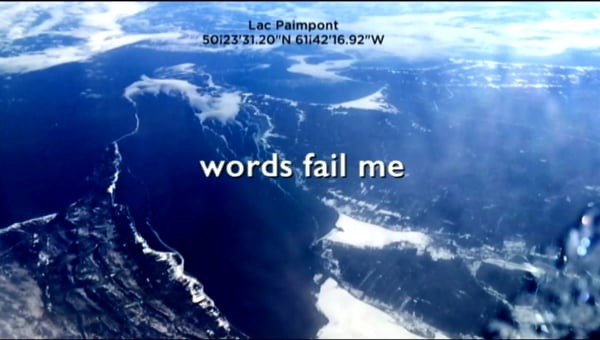
‘Holly Fisher has been active since the mid-sixties as an independent filmmaker, teacher, and editor of documentaries, including the 1989 Academy Award Nominee Who Killed Vincent Chin? Her personal works (director, camera, editor) have been screened in museums and film festivals worldwide, including The Museum of Modern Art, two Whitney Museum Biennials, and Centre Pompidou. Her first documentary Watermen, co-made with filmmaker Romas V Slezas in 1968, recently resurfaced to great acclaim when recently screened on Maryland Public TV and at The Environmental Film Festival in Washington, DC. Fisher’s first solo feature Bullets for Breakfast, made via JK optical printing of layers of S8:16mm, received “Best Experimental Film” at the Ann Arbor Film Festival, 1992. Two of her works have had world-premiers at The Berlin International Film Festival, including Bullets for Breakfast and her first poetic documentary concerning Burma, Kalama Sutta: Seeing is Believing, in 2001.
‘With an on-going interest in human rights, perception, and media, Fisher followed with a second Burma project –– Deafening Silence (118 minutes, 2012), in which she travels to The Goldenland’s eastern frontier, on foot and under-cover with guerrilla soldiers, to document life in a village of internally displaced ethnic Karen people. A Question of Sunlight, links 9/11 with the holocaust via ‘the telling of memories’ by NYC artist José Urbach, who was witness to both.
‘Holly Fisher was invited by the influential contemporary photographer Peter Lindbergh to collaborate on the film Everywhere at Once (final cut 2010). The film incorporates Lindbergh’s photographs with clips from Tony Richardson’s film Mademoiselle (1966), starring Jeanne Moreau. It premiered in the Avant-première program at the Cannes Film Festival in 2007.
‘Currently Fisher is expanding into video installation and large-format digital prints, in preparation for her first gallery exhibition, fall 2014. Rejecting strategies of agit-prop, Fisher’s films are open-ended essays, both long-form and short, in which she fuses linear narrative with non-linear and increasingly layered and cyclic structures, as a way to position the viewer at the subject/center of the work as it unfolds –– in pursuit of presence, or ’empowerment,’ for want of a better word.’ — Folkstreams
___
Stills














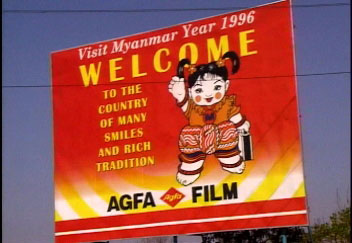
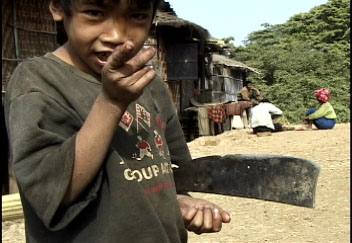











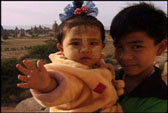




















___
Further
Holly Fisher Website
Holly Fisher @ instagram
Holly Fisher @ IMDb
Holly Fisher @ Filmmakers Cooperative
Holly Fisher @ Experimental Cinema
Holly Fisher @ RE:VOIR
Deafening Silence with Holly Fisher
Thickening the Plot : ‘Bullets for Breakfast’
Fisher’s Rushlight and Gaine’s #3, Great Neck and Edge
Holly Fisher: Kalama Sutta: Seeing is believing
Holly Fisher @ MUBI
Essays and reviews of Holly Fisher’s films
____
Extra
Holly Fisher, Everywhere At Once , Tribeca Film Festival
________
Interview
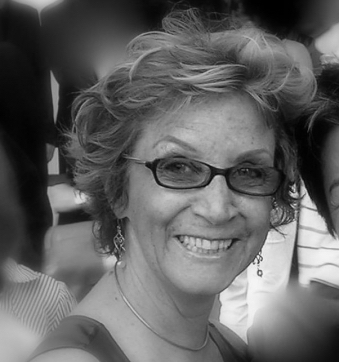
On March 23rd independent filmmaker Holly Fisher visited UnionDocs to show Deafening Silence, her poetic documentary about life under Burma’s brutal military dictatorship. Following the screening, she spoke with filmmaker John Gianvito (Profit Motive and the Whispering Wind (2006) and Far from Vietnam (2012)) about the complexity of the present situation in Burma.
Holly Fisher: Burmese leaders had launched a big campaign for tourism and I understood that if I was to go to there, any image that I brought back was essentially for the junta if I didn’t work behind my own image. They had sanitized all the tourist spots and were controlling where you could and couldn’t go.
I didn’t have any tour guide. My idea was just to go and come back with a bed of images that I would then work through. I spent five years trying to understand what was going on.
During the last trip, in 2003, I took two cameras and trained one of the Karen guys who came and hiked with us.
I was interested in what I saw as a sort of sadomasochistic situation between the junta and the population, which is some kind of diabolical marriage. I wanted to see if I could break it apart and work it towards something more ambiguous, more subtle, less white and black.
John Gianvito: Part of what you have done here is to respect that complexity of the Burmese situation, and it is reflected in the form of the film. It doesn’t seem to provide all the answers. It gives a prismatic way of journeying through some measure of what one sees as an outsider travelling. I heard you got a false ID and pretended to be a tour guide making little movies to develop tourism.
HF: When I got out of college I made a film with a partner that attempted to take over the army corps of engineers who were destroying a wild river in Florida. After making that film I got interested in issues such as: can you change minds with films and how? I got interested in the relationship of image to audience and how to put images together in a way that would make you implicit to the situation, not a consumer of it. I worked with a lot of layerings, very abstract or silent multiple projections.
My first Burma work was made at a period where I was going in and out of my own work, working as an editor for others.
One thing I’ve learned is you can either manipulate the audience to think what you want them to think or you can work to invite them to think. I spent years embarrassed by my own work. I knew what I wasn’t doing, but I didn’t know what I was trying to do. I’m only now beginning to see.
I’m interested in complexity. There is a pleasure in ambiguity, in not knowing. I’ve been finding an organic way of structuring, without a beginning, a middle, or an end. So you could see it as a film about Burma or you can see it as a sort of tapestry… even if I don’t like that word.
JG : I think this film is what I could call a utilitarian film, a film that re-sensitizes us to things we may already know, but where we need constant reminders. This movie is about Burma but not only. When I think about the question of the representation, it makes me think about Harun Farocki’s Inextinguishable Fire (1969), a 20-minute film about the manufacture of napalm made in the late 60s. There was a moving sequence where he talks directly at the camera about the fact that if he actually showed these images, what would happen is that it would hurt our feelings, and you would close your eyes, and eventually you would close your heart. This is not what he want to have happened—“when we show you pictures of napalm victims, you’ll shut your eyes. Then you’ll close them to the memory. And then you’ll close your eyes to the facts.” Then he takes a cigarette and burns his arm.
The testimony you hear in Deafening Silence and the shifting into the most lush, seemingly tranquil [scenery], invites tourists to the landscape underneath what you know. I find it a very potent approach on how to bring this knowledge.
HF: The image of the dead woman I used—that I didn’t use in my first film—makes me want to raise the question of using images like this. I did it by naming the cameraman who shot it: “to Rambo’s sister.”
I was pretty sure you would start to wonder what happened to her, when you saw that title, so you would weave that into the rest of the film. You are waiting for what’s going to happen. I wanted to conflate her with Aung San Suu Kyi. I wanted to set up a kind of complex hovering where these two women aren’t really in the film, but are in your mind. What you think you know about them, what you imagine, what could happen.
JG: When you talk about war, you have to talk about men. I’m referring to Susan Sontag’s book. It is always men who make the war, always men who like to go to war. I recently showed my class a documentary, The Invisible War (2012), about sexual violence in the military, and it lead to a discussion about how legal systems are. It doesn’t direct its anger towards men, but all of these rapes are always by men.
That was going through my head as I was journeying through the film again and thinking about the opening to this innocent young girl. If she sees this film later, what is it going to mean to her?
HF: In many advocacy films, we say the viewer is a consumer, that there is a narrative.
In what I’m doing, there is no story you can give yourself over to. I don’t allow you to identify with some character who is going to lead you through the film. You are more on your own and you have to piece together what it means and doesn’t mean.
JG: When we talk about a form such as this, that doesn’t have the archetypical beginning, middle, and end, you have to find your way. There is something that I say in relationship to my own movies, and I’m curious if you feel similarly. I often quote the filmmakers Jean-Marie Straub and Daniele Huillet: “we make our films so that people can walk out of them.”
For him there is a fascism about traditional, orthodox narrative forms that are all about keeping you in your seats, all about your eyes. He speaks about the desire to create a more democratic open form—take a look, but I’m not going to force you to stay.
HF: I made up the entire project to force me to use video. I learned on film, celluloid, so I designed this project to learn how to use new types of media and the internet. I’m always interested in multiple points of view, and where films are coming from. I’m also intrigued about how the existence of the internet changes how we live on the planet.
JG: What makes it personal is that you are always sensitive to your camera work and how you are exploring the situation, whether it’s at home or elsewhere. You could have set it up on a tripod, you could have downloaded the youtube clips neatly. People who see it quickly must think it’s amateurish, but in fact it is one of the values of how you’ve approached something.
HF: The thing that interests me in all the types of archival videos is how they are shot, how they are framed, and the person who narrates. They make themselves the center of their stories. I like to contrast that with my own funky way of doing things. The film is really made up of many little films.
_____________
15 of Holly Fisher’s 32 films
______________
thin/ice (2019)
‘“Snow & Reeds” – 1st sketch, edited from a single day of filming with iPhone, Feb 2014. Note child’s wooden bed frame half-submerged in ice, at 4:29 min.
‘Between 2013 and 2016, I filmed around this pond daily whenever possible–with iPhone and/or HD camera, being sure to always include this rotting wood bed frame, regardless of time, light, or weather. Footage is material for a full-scale immersive installation project, for completion in 2019.’ — HF

______________
ruffled feathers (2016)
‘Made as a variation of Trio en Rose (S.8 video original material filmed with a consumer camera in Brittany, 2006), Ruffled Feathers is a playful, intricate, and multi-layered dance piece—in which the dancers are seagulls, walking about on the pink granite rocks of the Côte d’Amour. As inTrio en Rose, my focus is on their skinny legs, knobby knees, and wide flat feet, coupled with a cheeky fearlessness.
‘The music piece IO by contemporary composer Lois V Vierk is the same used in Trio en Rose (also excerpted in A Question of Sunlight). Seagulls, layered glissandi, and cross/cut editing between frames interplay once more in counterpoint. But with additional tempo variations, more video layers and a muted palette of shifting colors, Ruffled Feathers has a different and decidedly darker feel even within the ironic formality that characterizes both works.’ — HF
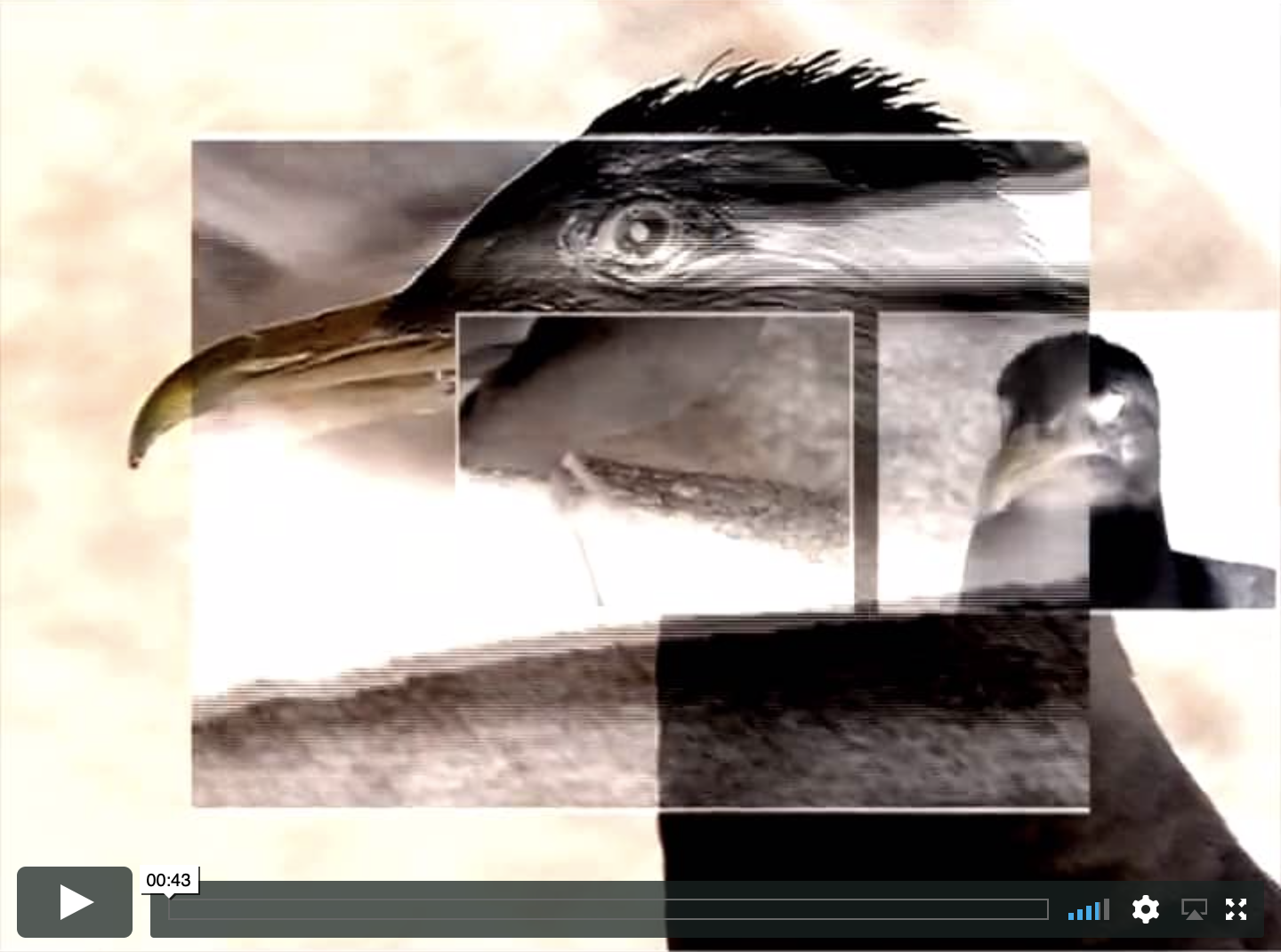
______________
a question of sunlight (2015)
‘Recorded in the shadow of the Trade Towers only months after their collapse, A Question of Sunlight links 9/11 with the Holocaust, via “the telling of memories” by visual artist José Urbach, witness to both. José speaks almost magically, from childhood to the present, and anywhere in between. He was a Polish child born into the Holocaust, and as he watched the first plane smash into The World Trade Center from his kitchen window in lower Manhattan, he had a radical flashback to his earliest childhood memories. From a child’s-eye view he recalls former times, other windows … like the bombing of the Polish airport that triggered the start of World War II. (An uncanny irony is that he was in his mother’s belly that day.)
‘Unique to José’s telling is his desire to “actualize” his memories, to make them present and timely. He tells his stories vividly as if they were movies, in a continuous search for insight within the veils of memory, which still haunt him. This unsettling vacuum between past and future is magnified as I lace my personal and found imagery within Urbach’s narrative–curtains flying out Paris windows, “Shock & Awe” on airport TV, rare footage by Joris Ivens from the seminal East German film Die Windrose–for resonance, or “just to lend a breath of air …”’ — HF
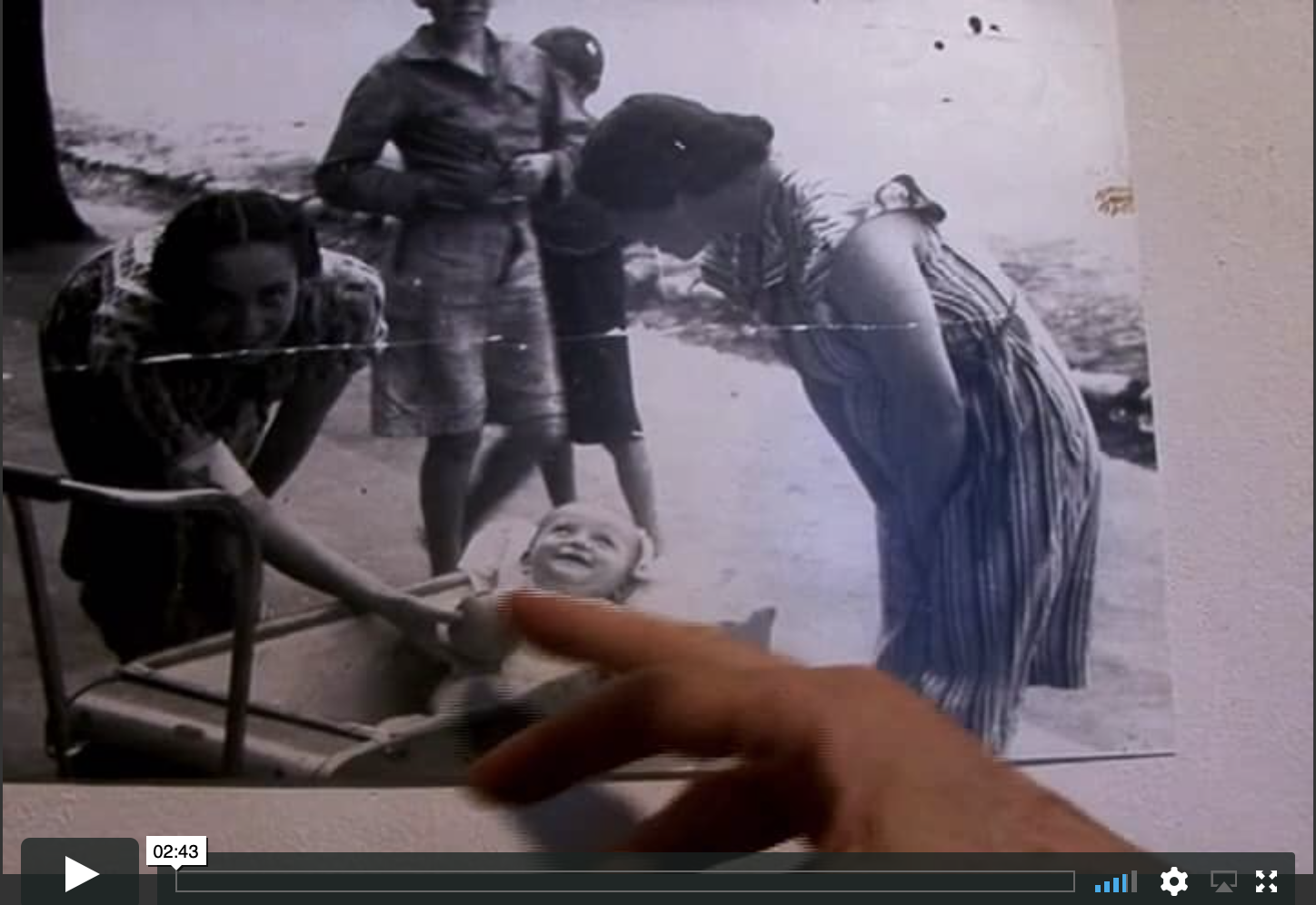
________________
deafening silence (2012)
‘Deafening Silence is a fusion of beauty and terror, observation and anger, roving visuals and intimate stories that are funny, contemplative, or horrific–a subjective, layered depiction of Burma under brutal military dictatorship. My first trip was legal, shooting video as a fake tour guide doing research. The next was on foot, under-cover with ethnic Karen guerrillas, to film internal exiles surviving in a free-fire jungle war zone.
‘Colonial archival imagery and clips from YouTube are woven within this tapestry of fragments, often in ironic counterpoint, and always to pierce the chokehold of censorship. This is a living history of a country arrested in time, a hybrid documentary focusing on ethnic genocide but with constant poetic resonance and a rich multiplicity of references to history and popular culture.’ — Hank Heifetz and Holly Fisher

________________
w/ Peter Lindbergh Everywhere at Once (2010)
‘In Everywhere at Once renowned photographer Peter Lindbergh and experimental filmmaker Holly Fisher collaborate to weave together a tapestry of images, incorporating Lindbergh’s still pictures with clips from the Tony Richardson film Mademoiselle (1966), starring Jeanne Moreau. The photographs are animated through a re-filming process to create a flow of moving images that are intercut with passages from the movie. Iconic actress Jeanne Moreau, using a text by American poet Kimiko Hahn, narrates the diary-like fragments of memories and recollections in the first person. The haunting music by Lois V Vierk accentuates the fleeting quality of these fragments of dreams and memories. As with Fisher’s other experimental feature films, Everywhere at Once exists on the dividing line between fiction and documentary. Rather than offering a linear narrative, threads of the story move forward and are interrupted, bending back upon themselves in space and time, resolving into a series of subjective associations. The film might be read as a biography of Moreau’s own life, as a fictional discourse on the protagonist’s emerging sense of selfhood, or as a humanist meditation about childhood, youth, and old age. Whatever the viewer’s interpretation may be, the film functions most deeply on the level of an intensely subjective rumination on perception. This positions Everywhere at Once squarely in the tradition of such avant-garde French New Wave classics as Hiroshima, Mon Amour (1959), Last Year at Marienbad (1961), and La Jetée (1962).’ — Jon Gartenberg
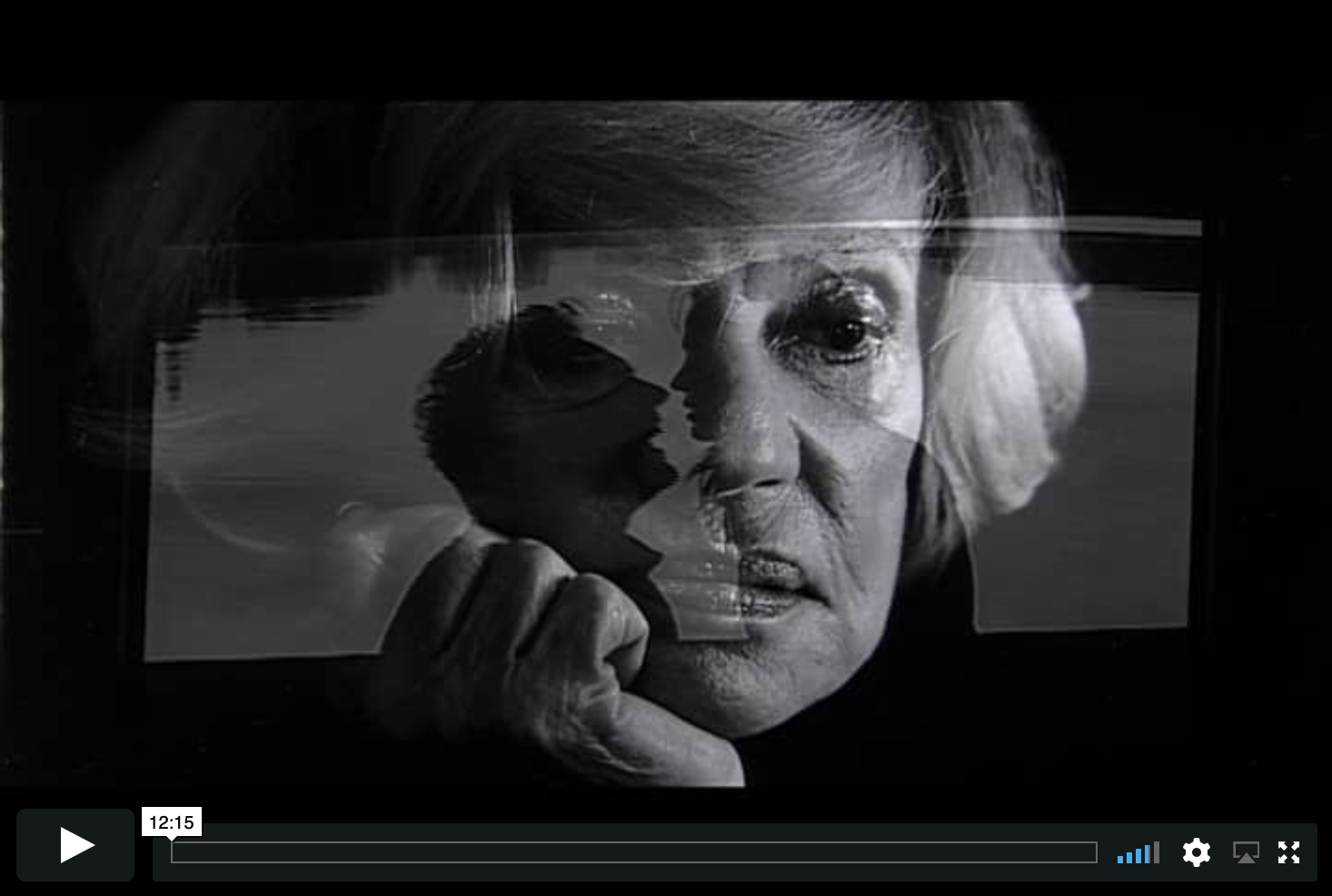
________________
kalama sutta: seeing is believing (2002)
‘New York-based experimental filmmaker Holly Fisher, known for a series of conceptually complex and visually elegant films, studies Burma in her latest project, Kalama Sutta, moving beyond picturesque travel images to examine the country’s political upheaval and oppression. … Fisher creates a dense patchwork of information that eschews a single perspective. Tales of torture and political struggle against the military dictatorship contrast with garish Web visuals and shots of the country’s beautiful landscape. Indeed, Fisher structures the film around this dichotomy, playing off the invitation to foreign tourists to visit Burma. Seeing is Believing is the hypocritical entreaty, as assertion deftly undermined by Fisher’s collection of personal testimony from exiled activists. The film’s title comes from the Buddhist Charter on Free Inquiry, which says we should doubt appearances. Fisher does just that with her poetic essay, refuting the propaganda of a government bent on attracting tourists while brutalizing its people.’ — Holly Willis, LA Weekly
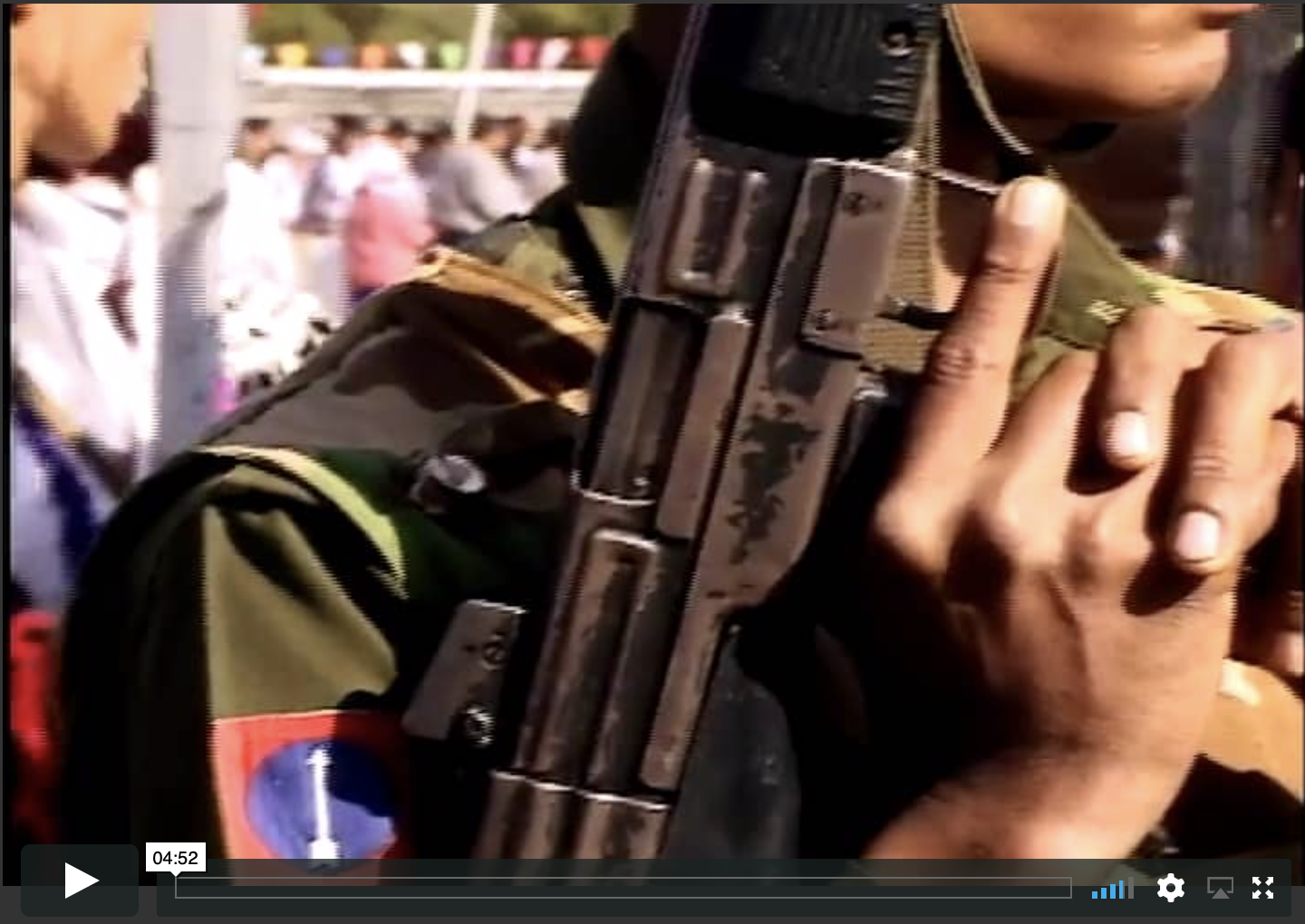
_______________
bullets for breakfast (1992)
‘Images from My Darling Clementine form the basis for thought-provoking interpretation in Fisher’s Bullets for Breakfast. Combining stunning optical printing with a dense weaving of poetry, storytelling, and visual narrative, Fisher’s film explores the violent underside of another frontier—gender relations. Juxtaposing a pulp-western writer with a feminist poet, or women working at a herring smokehouse with those depicted in paintings by European Masters, Fisher reorders stories and images like musical motifs. A captivating hybrid of experimental and documentary technique, Bullets for Breakfast mines the depths of subjectivity, blurring the lines between myth and reality, fact and fiction.’ — Jon Stout
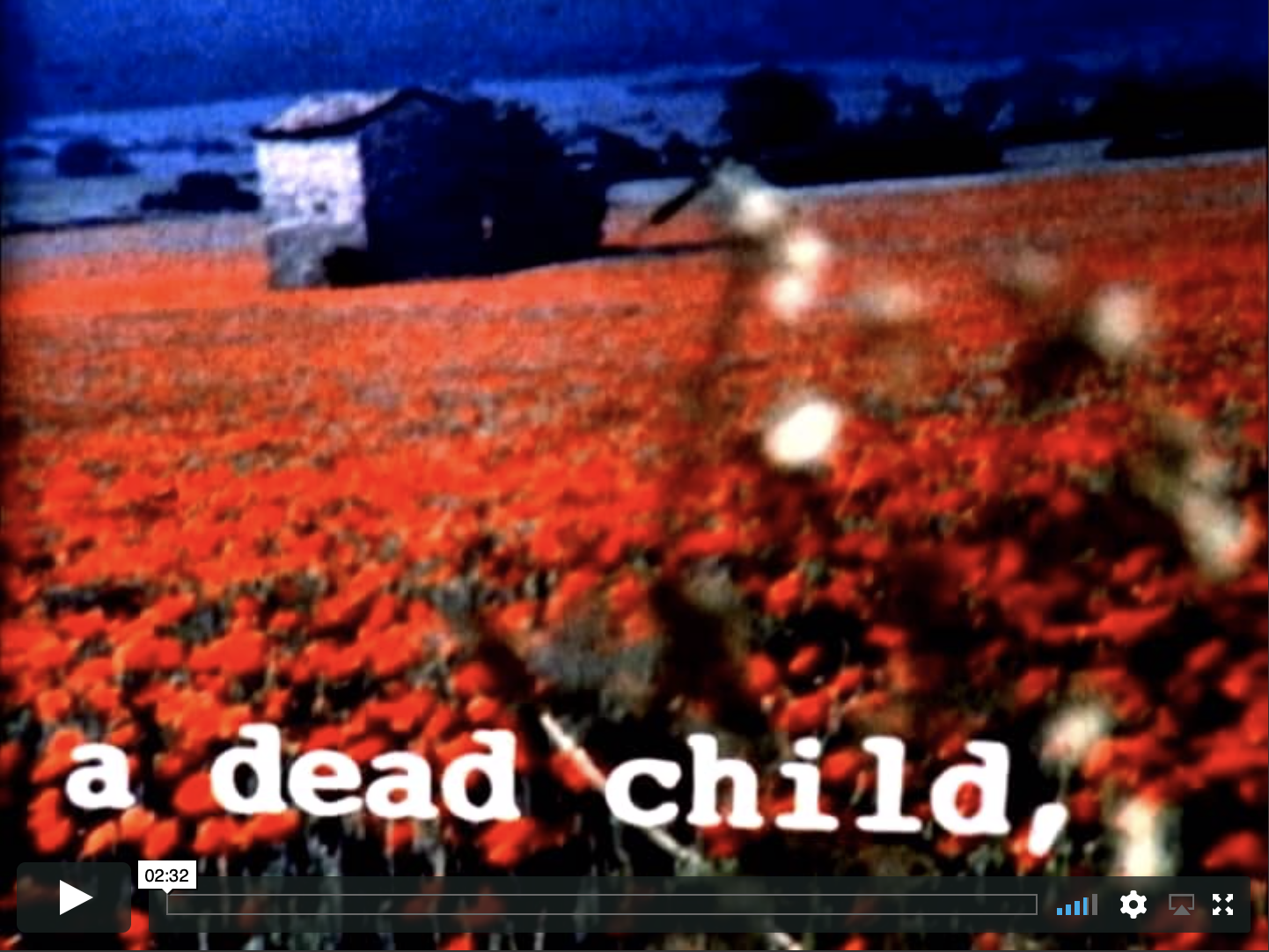
______________
s o f t s h o e (1987)
‘Optical printing links East with West within a mosaic of looped, layered and shifting images filmed originally on Super 8 while on a (train/car/thumb) trip across Europe in 1978. Swinging cow udders, woman sweeping, farm woman walking, nuns chanting, Nude Descending, voices in a bread shop, Dachau and other artworks from Documenta 7, riding the escalator of the Centre Pompidou, etc. are layered in overlapping, shifting, and repetitive frame-clusters pulled from Super 8 footage filmed on a trip that began in Bucharest and ended in Paris. Disparate elements are combined and manipulated to construct a lyrical work about walking, history, and memory.’ — HF
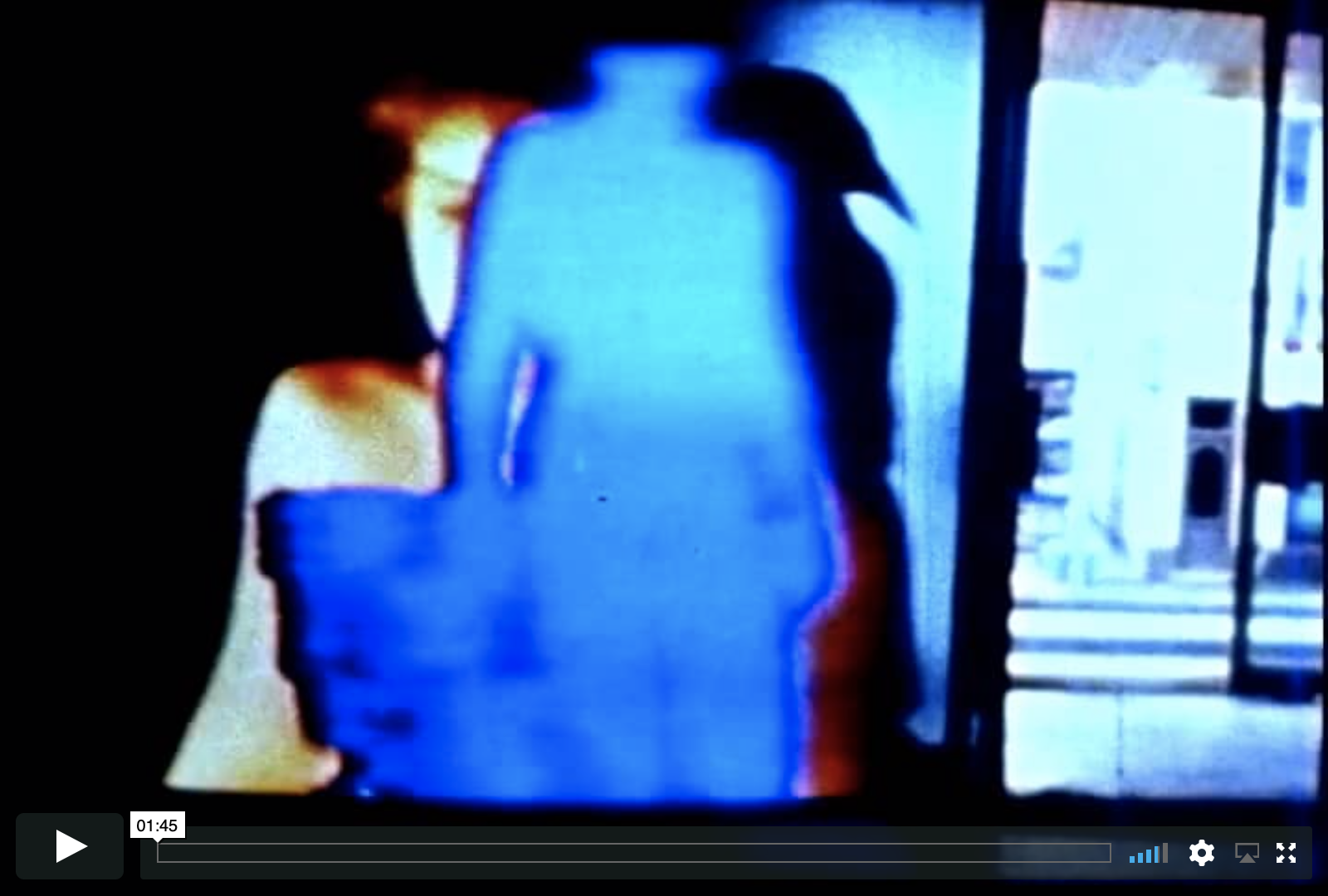
_______________
rushlight (aka here today gone tomorrow) (1984)
‘Rushlight (aka Here Today Gone Tomorrow) was made from a single, three minute roll of Super 8 footage shot over one day of stop/start driving through the Maramures folk district of Romania. I reworked this footage via JK Optical Printer using a larger than normal film gate designed (by myself) to allow the re-filming and hence layering of frame clusters as well as single frames.
‘This project explores an intersection between transition and memory (passing time, times past, arrested in time, what lies ahead) through looping, stretching, and layering of images filmed originally while driving through this unique preserve of Romanian culture. A silent, visual sketchbook of sorts, this work explores the repetitive, cyclical structuring of this Super 8 footage developed over several years of working with a JK Printer. The result is an open and meditative work around the subject of “passage.”’ — HF
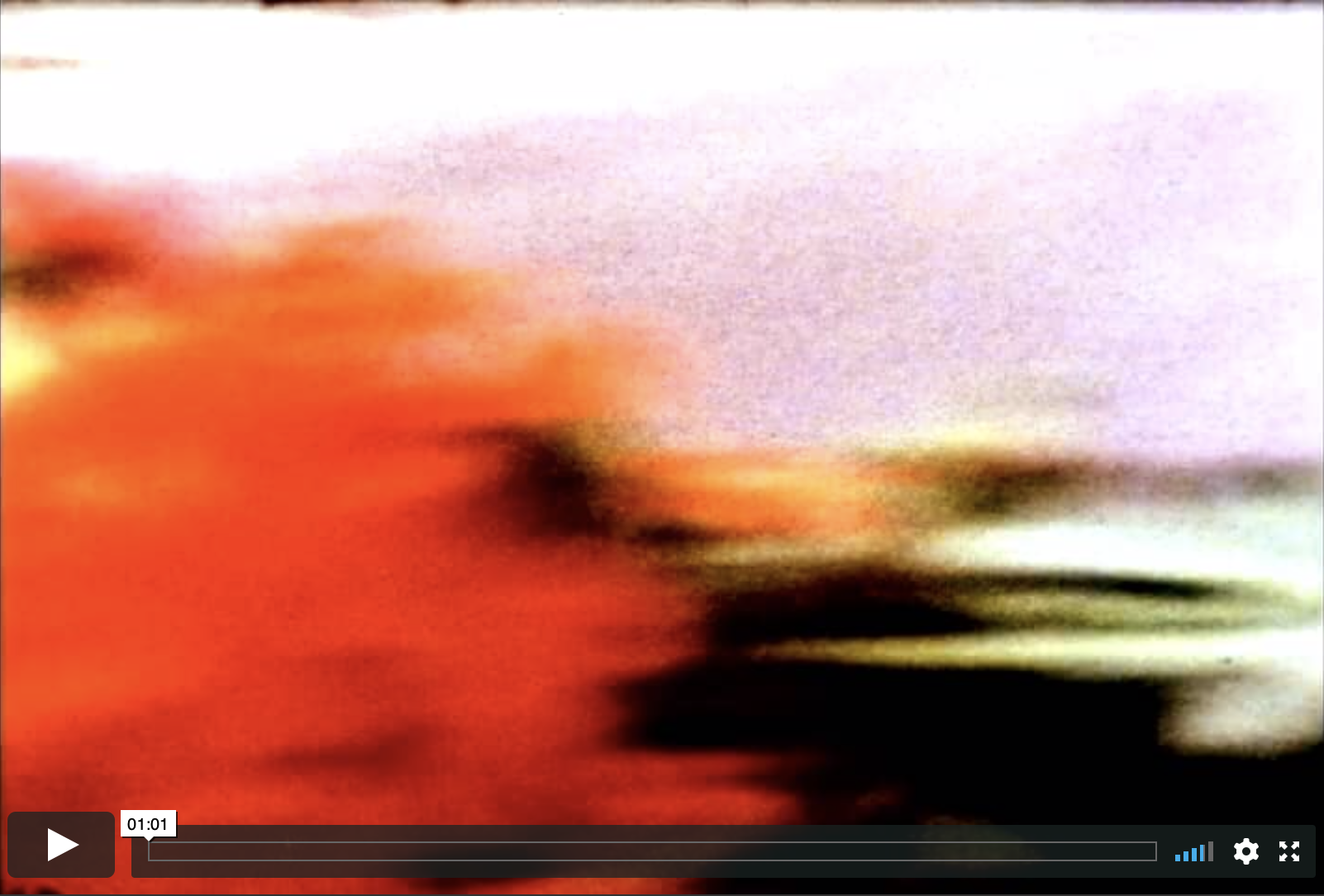
_______________
this is montage (1978)
‘Inspired by a passage from Sergei Eisenstein’s Film Form, this film explores relationships between film and language while playfully challenging the Russian filmmaker’s theory of film montage … and thus lies between a wink and a nod to the master. Also a bit of tongue-in-cheek to myself as aspiring film studies student: had I been a good typist I very likely would never have become a filmmaker.’ — HF
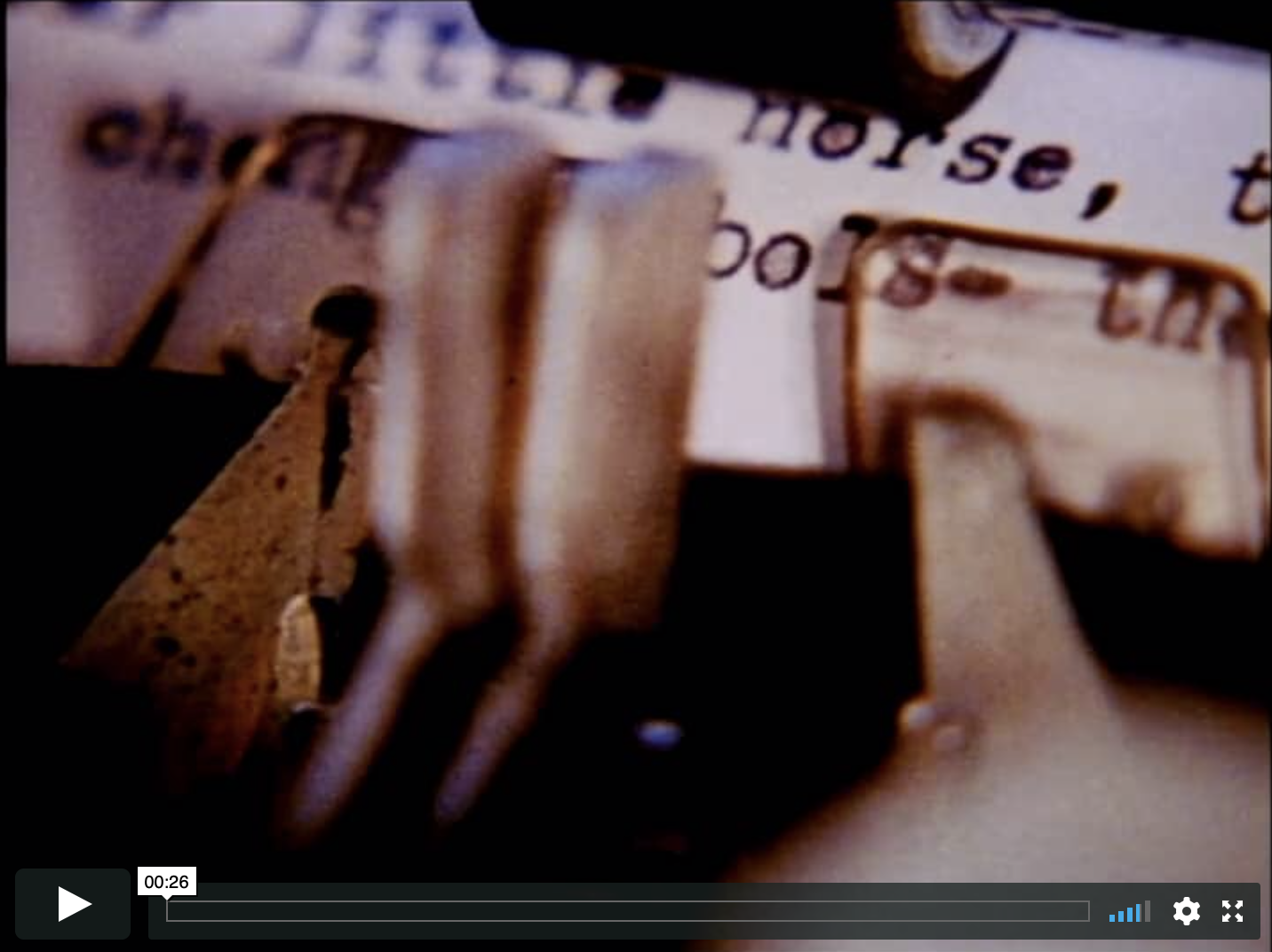
________________
chickenstew (1978)
‘Re-enactment of a mellow evening with friends, in which a static camera, synchronous sound, a shiny cook pot, and an old wood stove conspire in a game of hide-and-seek with the viewer—involving film illusion and point-of-view. A single strand of 16mm and/or a watched pot. …’ — HF

_______________
from the ladies (1977)
‘Filmed in the multiple-mirrored women’s powder room of the NYC Holiday Inn: A space designed exclusively for me (being a woman), which seemed simultaneously seductive and vulgar, and in which the most visible object was myself looking at myself with Bolex-in-hand. Looking at From the Ladies is an orchestration of tensions from this play between myself as filmmaker subject, object, and woman. Filmmaker at play with the gaze, so to speak.
‘Shooting begins with slow pans in wide sweeping arcs that capture anyone walking through. Gradually the shooting tightens, culminating in a passage of single-frame bursts reflected in the many mirrors. Space is transformed into an abstract swirl of motion and emotion. Tempo is the result of shot duration, as I flirt with real and reflected images, active and passive moments, making seamless shifts between subjectivity and abstraction. The sound track layers random bathroom sounds with looped voices of hotel cleaning women plus intermittent fragments from conversations occurring in the ladies room.’ — HF
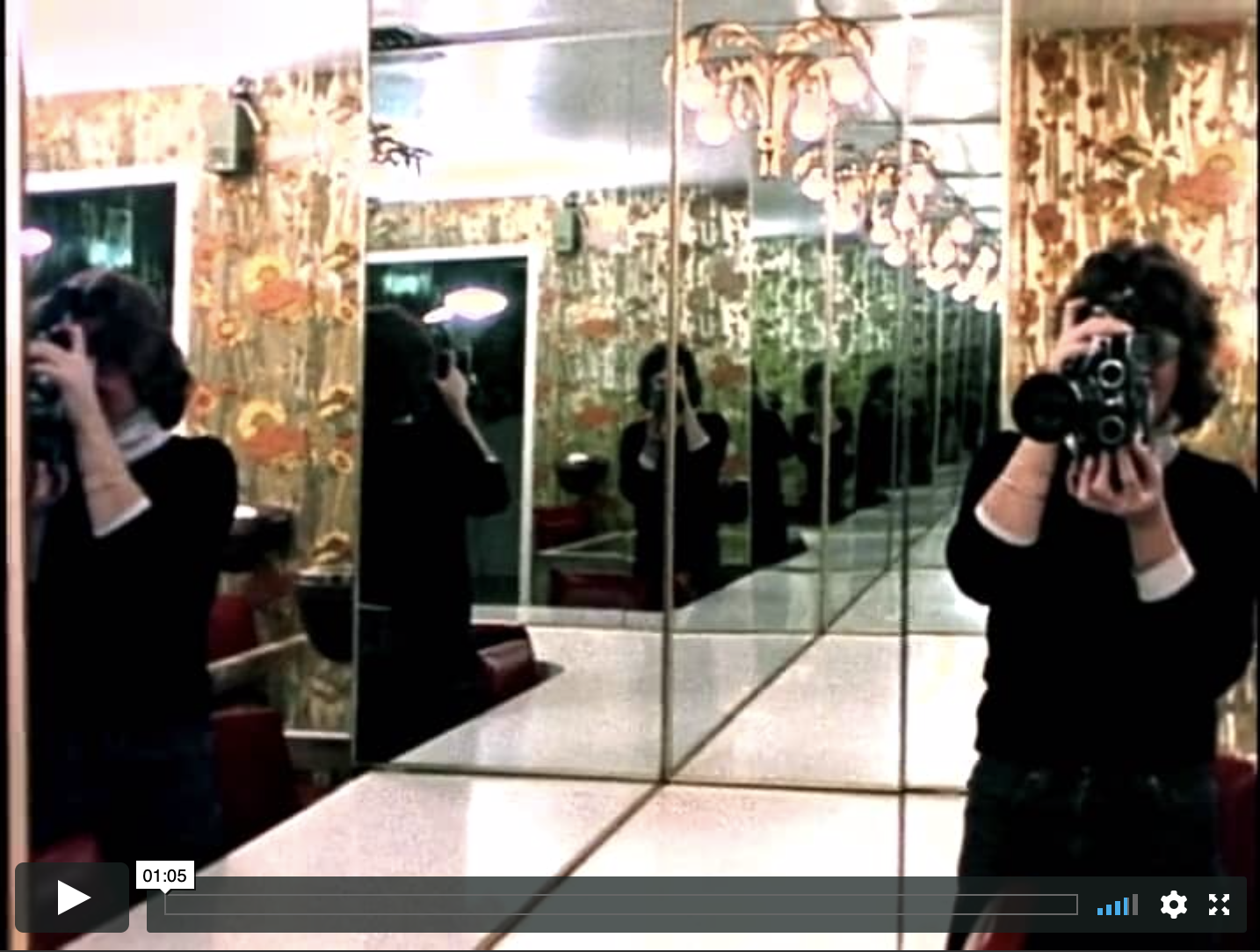
_______________
apple summer (1974)
‘Camping in Down East, Maine with artist friends evolved into a spurt-framed portrait of artist Donn Moulton. Footage of Moulton in Maine, his studio in Cambridge, and installation of his fiberglass apple paintings at Kornblee Gallery, NYC, is intercut with edited-in-camera expressionistic sequences from our camping trip.
‘The project became a playful exploration of my own way of working, via voice-over conversations between Moulton and myself on the subject of art, film, and commitment. The rough-edged, cross-cut, free-wheeling form reflects ways in which my early, highly intuitive notions of art-making differed from Moulton’s. It’s in making this film that I learned to exploit my mistakes and think with my hands.’ — HF
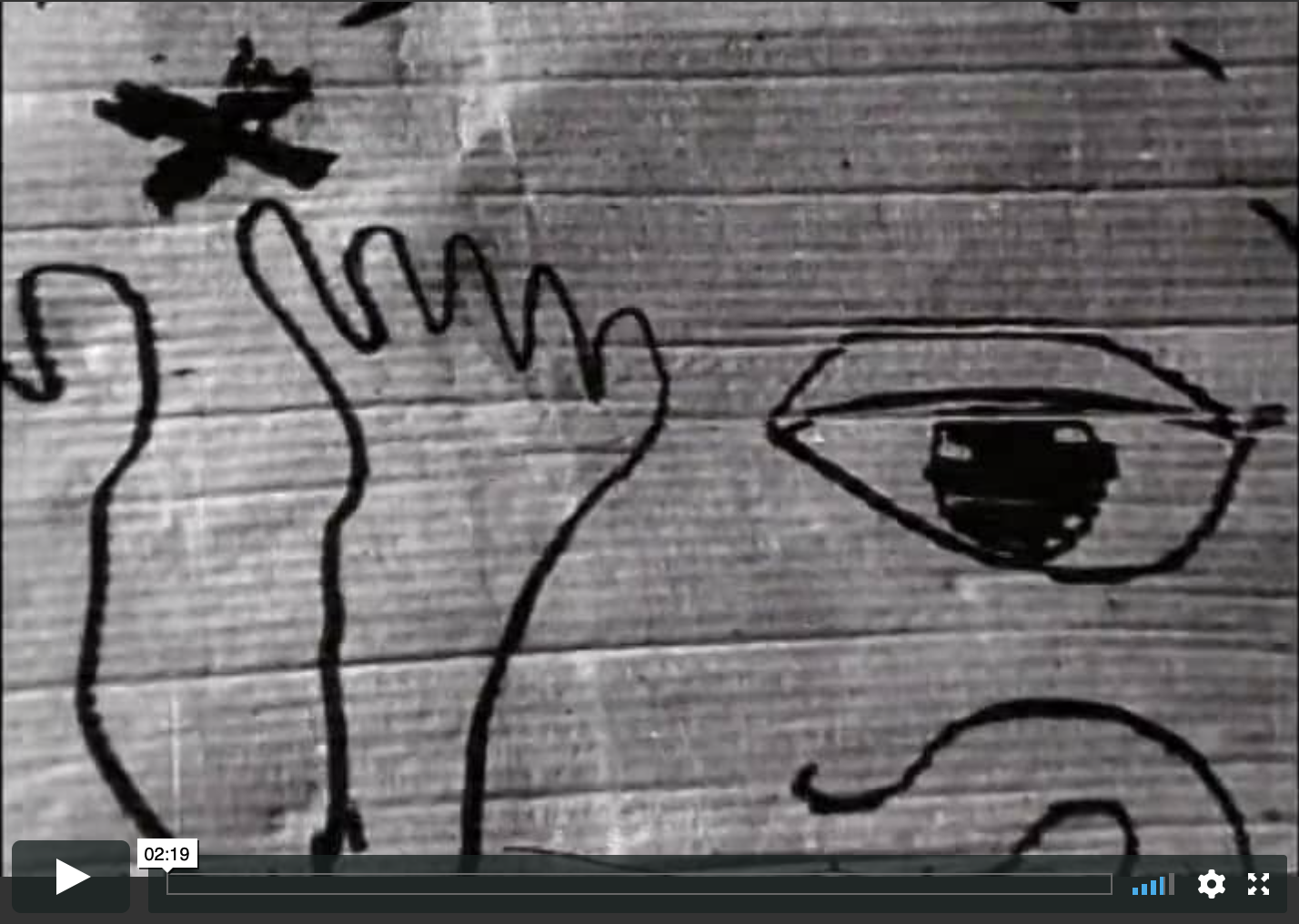
________________
subway (1968)
‘Subway is a subterranean passage that lies somewhere between fiction and diary, with literal and psychological overtones from the late ’60s. Framed within a ride on the Harvard/Ashmont Subway Line at rush hour–as the train fills and then empties, moving further from downtown Boston while I direct my 7-year-old nephew, Ben, to stand and look around, sit, get off, watch himself depart, get back on, and walk away–intercut with various scenes from my on-going (Bolex) film diary; seagulls circling, anti-war street demonstration past Playboy Club in downtown Boston, large dogs leaping into saltwater, crowd on escalator, Ben’s image in surveillance camera, twilight through half-built, backlit Coop City under construction…
‘The impulse for multiple layering, juxtaposition and other interplay of disparate imagery seemed to come naturally, even after having spent some years co-making documentary films. At the same time this film comes closer to a narrative structure than anything I’ve made before or since, with the exception of PSSSHT!‘ — HF

____________
psssht! (1968)
‘The dangers of aerosol sprays to the ozone layer were all over the news in the late ’60s, right up there with fierce anti-Vietnam War sentiment, identity politics, and a burgeoning environmental movement launched by Rachel Carlson’s Silent Spring. Within this context, an advert for a “feminine crotch spray” inspired the making of PSSSHT!‘ — HF

*
p.s. Hey. I’m off to the French city of Caen today where we’re doing a special ‘Permanent Green Light’ event tonight. A fair number of the cast and crew live there or near there, so it should be fun. I mention this because I will be training back to Paris tomorrow morning, and, hence, there will be no p.s. on Wednesday and the post will be a restoration. I’ll be back here again full-on on Thursday. ** David Ehrenstein, I just read a very solid analysis of the parliamentary election this morning. Yes, Le Pen’s party won 23% of the vote, giving them more seats in the European parliament than any other single French party. (They were expected to do better than that, so it was actually a disappointment for them.) But the various parties on the Left, the Greens especially, the Socialists, and Center parties combined received 77% of the vote. The percentage of eligible French voters who voted for a candidate and didn’t leave their ballot blank was 39%. The turn out among non-Le Pen voters was very low; the turn out among Le Pen voters was very high. Add it all up, and 90.8% of French citizens did not support the Far Right. What the results mean is that the Far Right is more consolidated than the Center and Left, which is not new or news. That’s not great, obviously, but Le Pen’s party is no more powerful or large as of Sunday than it has been for years. Pundits in the US seem to be misinterpreting Le Pen’s party slightly beating the very unpopular Macron’s party as meaning more than the fact that Macron is very unpopular in France, which, again, is not news. What’s news is the surprising success of the Greens. That’s what people here are talking about. I promise that if it ever reaches a point where the Far Right is about to take over France and maraud through the streets, I will let you know. ** Sypha, Ah, always so nice when a post leaves a trace, especially in someone’s art. Cool. Ha ha ha, I don’t know what that quote means either, but I also really like it. Might make a nice blurb. Thanks, James! ** Steve Erickson, I hear that unless one has a serious ‘in’ with someone one trusts and/or who has connections to an actual lab, what’s sold as LSD today is basically a garbage can. After seeing the trailer and hearing a lot of either ‘meh’ or negative reports from Cannes, I have pretty much lost all interest in seeing that Jarmusch. I’ve included hell houses in haunted house posts. My memory is that there isn’t enough good stuff out there to make for a decent or interesting enough post solely about hell houses. I’ll try again, though, actually. ** _Black_Acrylic, Other than the ‘Go to Hell’ poster, which I quite like, I agree with you. And I checked, and neither of those marketing makeover proposals were accepted, no surprise. Good news about Scotland’s portion of the parliamentary election. Man, I love what you’re hoping for. Add my crossed fingers. ** Nick Toti, Hi, Nick. Yeah, right? Yes, I did a search, and I don’t think there’s enough free Oberzan stuff to do a full post unless I can figure out a way to be creative, but I plan to click through what is there and get educated when I get back from my trip. It looks great! Thanks a lot for the tip. Here’s hoping your week is way up there, week-wise! ** Misanthrope, I’m sure you needed the lazing. That’s funny: I randomly picked my copy of ‘Sweet Tlooth’, the Harry Mathews’ novel, off the shelf and read a bit the other day. Sync! I don’t know what Real ID is, but I guess I had better find out because, yes, it could effect my situation. I need to get an artist’s visa pronto. I’ve been procrastinating, and I can’t afford to do that anymore. Eek. ** Chris Goode, Chris, maestro, buddy boy, hero, pal! How lovely it is to cast my eyes on your typing and, by proxy, you! Okay, I’ll see ‘Beats’. I’ll figure it out. Seems like something that would hit a theater or two here. Done deal. No prob whatsoever, obviously, about the podcast. That was so much fun to do! Whenever is A-okay for me. Happy birthday! 46 is a goodie. It’s not bad at all. You still have a quite ways to go before it starts going to mild shit. I’m good, maybe peachy even. So, so, so nice to see you!!!!!! Big love from me. Come back soon! ** Corey Heiferman, Good question. Sounds like a documentary waiting to happen right there. Go for it: documentaries. What a great form. I feel like the vast majority of films I’ve really liked in recent years were mostly documentaries. Oh, yes, ‘Chelsea Girls’ is one of the greatest films of all time in my humble opinion. A film that changed me and what I thought film could be permanently when I first saw it. My favorite slice is the sequence where Eric Emerson is on acid and blathering. In fact, in my old literary zine Little Caesar, one issue had a tribute section about Emerson, and I painstakingly transcribed his entire ‘speech’ for the issue, Enjoy! ** Right.Holly Fisher isn’t a very well known filmmaker, but she’s terrific. I advise you to investigate her work today, thank you. The blog’ll see you solo tomorrow, and then it and I will see you on Thursday.




 Now available in North America
Now available in North America 
Great Holly Fisher Day
Relieved to see your read-out of the French elections. All the coverage this side of the pond suggests a LePen victory — which thankfully it wasn’t
The Warhol mueum has just pubished massive “Chelsea Girls” book that includes my “Film Culture” piece and features a complete transcript f all the dialogue, including the “Their Town” section which is a film version of Ronnie Tavel’s play “The Boy in the Straight-Back Chair” When rejected this color section is used as visual accompaniment with little of the dialogue audible. It also includes the “Afternoon” reel which was excised when the film went into wide realse and replaced with a color portrait of Nico. “Afternoon” was shot at Arthur Loeb’s apartment and features Arthur, Dorothy Dean and Edie Sedgwick.
For a film made back in 1968, the focus of psssht! on identity politics and the environment puts it way ahead of the curve.
Is there any easy way to watch Fisher’s complete films on-line?
THE DEAD DON’T DIE is worth seeing if you’re interested in Jarmusch. There’s just not much substance to it and the meta smirkiness is more annoying than witty. The potshots at Trump and consumerism are sub-sub-Romero and if the film conveys anything real about American life in 2019, it’s a mood of pessimism and depression, not overt politics. But it actually does express that fairly powerfully in its final scene.
Dennis, This Real ID law went into effect after 9/11 to prevent terrorists from getting on planes. Of course, it really only affects the rest of us. States have until October 2020 to become compliant. Essentially, you have to present four pieces of identification -e.g,. birth certificate (original or certified copy), passport, utility bills, social security card, etc.- for your driver’s license/state ID to be in compliance. Otherwise, you won’t be able to get on a plane domestically or enter a federal building, etc. Also, there are fines and penalties for not having a compliant Real ID after that time period.
Here’s the thing: I just renewed my license and it’s a Real ID with the star and shit, but…they didn’t ask me for the documentation. So I have to go up to the MVA -it’s still the MVA here in MD, not the DMV- and present all these documents to prove I am who I am. Total bullshit.
Yeah, I need lazing and boredom. I enjoyed it! 😀
Sync indeed. So far, this year’s been pretty good, no? I’ve no complaints.